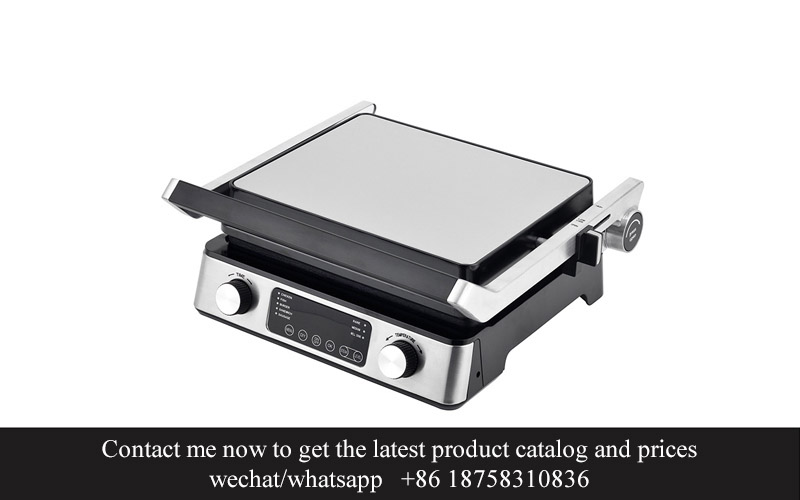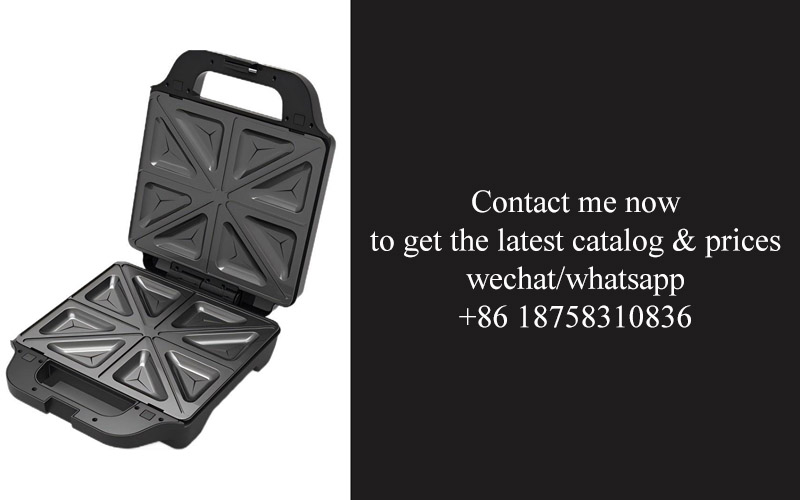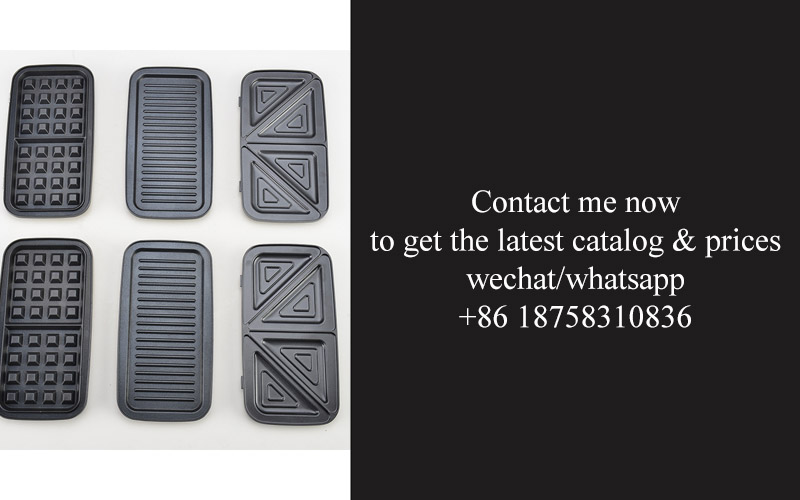Address
304 North Cardinal
St. Dorchester Center, MA 02124
Work Hours
Monday to Friday: 7AM - 7PM
Weekend: 10AM - 5PM
Address
304 North Cardinal
St. Dorchester Center, MA 02124
Work Hours
Monday to Friday: 7AM - 7PM
Weekend: 10AM - 5PM

In the ever-evolving world of culinary innovation, the industrial panini press has emerged as a versatile and indispensable tool in commercial kitchens. Its ability to transform simple ingredients into mouthwatering creations has not only caught the attention of chefs and restaurateurs but has also sparked a wave of creativity in the foodservice industry. As we delve into the power behind these presses, their ongoing market trends, and the innovative designs that are reshaping the landscape, it becomes clear that the industrial panini press is more than just a gadget; it’s a game-changer that’s redefining the way we think about fast, delicious, and efficient food preparation.
The Industrial Panini Press: A Culinary Game Changer
In the ever-evolving landscape of commercial kitchens, the industrial panini press has emerged as a versatile and powerful tool that’s reshaping the way chefs and foodservice professionals approach sandwich preparation. Once a novelty item in home kitchens, the panini press has transformed into a staple in professional environments, offering a unique combination of speed, convenience, and culinary flair.
With its sleek design and robust build, the industrial panini press is engineered to withstand the demands of high-volume cooking. The concept is simple yet revolutionary: a sandwich is placed between two heated plates, which then compress and cook the ingredients to perfection. But what sets the industrial panini press apart from its domestic counterparts?
Firstly, the heat distribution is meticulously designed to ensure that each layer of the sandwich receives the same amount of cooking, resulting in a uniformly golden-brown exterior and a melt-in-your-mouth interior. The adjustable temperature settings allow for a range of sandwich types, from crispy to tender, catering to a variety of preferences.
The industrial panini press is not just limited to the classic ham and cheese. Chefs have taken this versatile appliance to new heights, experimenting with a myriad of ingredients and toppings. From gourmet burgers to ethnic-inspired flatbreads, the possibilities are virtually endless. The press’s ability to seal in flavors and retain moisture makes it an ideal choice for creating moist, juicy sandwiches that keep their integrity even under high pressure.
One of the standout features of the industrial panini press is its rapid heating capabilities. Unlike traditional grills or skillets, which can take minutes to reach the desired temperature, the industrial panini press can be ready to use in just seconds. This efficiency is crucial in fast-paced kitchens where time is of the essence.
Another aspect that makes the industrial panini press a favorite among professionals is its durability. Constructed with high-quality materials, these presses are built to last, even with frequent use. The non-stick surfaces make for easy cleaning and maintenance, ensuring that the press stays in top condition for years to come.
The compact design of the industrial panini press also makes it a space-saving solution. Kitchens are often tight on space, and the ability to have a multifunctional appliance that doesn’t take up much room is a significant advantage. Whether it’s a bustling café or a busy restaurant, the panini press can be easily integrated into existing kitchen layouts.
Moreover, the industrial panini press has become a favorite among health-conscious consumers. With the growing demand for healthier eating options, these presses allow for the creation of custom-made sandwiches with fresh, whole-grain breads and a variety of lean proteins and vegetables. The press’s ability to cook ingredients without the need for excessive oil or butter appeals to those looking for lighter, more nutritious meal choices.
In terms of innovation, manufacturers are continuously pushing the boundaries of what the industrial panini press can do. Features such as digital temperature controls, programmable settings, and even built-in timers are becoming standard, providing chefs with even more control over the cooking process. Some models even offer variable pressure settings, allowing for a custom cooking experience tailored to each sandwich’s requirements.
The market for industrial panini presses is also witnessing a surge in eco-friendly models. With the increasing focus on sustainability, these appliances are being designed with energy-efficient heating elements and eco-friendly materials. This not only benefits the environment but also helps businesses reduce their utility bills in the long run.
In conclusion, the industrial panini press has transcended its origins as a simple kitchen gadget to become a must-have tool in commercial kitchens around the world. Its ability to deliver high-quality, customized sandwiches with ease and efficiency has solidified its position as a culinary game-changer. As the industry continues to evolve, it’s exciting to think about the new innovations and recipes that the industrial panini press will inspire in the future.

The industrial panini press, a marvel of modern kitchen technology, packs a punch that transcends the humble sandwich maker of yesteryears. At its core, the power behind this appliance lies in its precise engineering and innovative design.
The heat distribution is a cornerstone of the industrial panini press’s prowess. Unlike traditional countertop models, these heavy-duty presses are equipped with advanced heating elements that ensure uniform heat across the entire cooking surface. This is no small feat, as it means that every slice of bread, every layer of cheese, and every ingredient in between receives the same level of attention and care. The result is a perfectly toasted sandwich with a golden-brown crust and a melty, mouthwatering interior.
The compression mechanism is equally impressive. The industrial panini press exerts a consistent pressure that not only flattens the sandwich but also aids in the even cooking process. This pressure helps to seal in the flavors, keeping them locked within the layers of the sandwich. It’s this combination of even heat and pressure that allows chefs to craft high-quality, professional-grade paninis with ease.
Durability is another hallmark of the industrial panini press. Made from sturdy materials such as stainless steel, these presses are built to withstand the rigors of commercial kitchens. They can handle the constant use and are designed to last for years, even with daily operation. The robust construction means that the press can handle a variety of ingredients, from the softest cheeses to the crunchiest vegetables, without showing signs of wear.
Innovation doesn’t stop at the heat and pressure. Many industrial panini presses come with adjustable temperature controls, allowing chefs to tailor the cooking process to different types of bread and fillings. This flexibility is crucial for creating a diverse menu that caters to various preferences and dietary requirements. Some models even offer dual-zone heating, enabling separate control over the top and bottom surfaces, which is particularly useful for cooking items like burgers or wraps.
Safety features are also a priority in the design of industrial panini presses. Overheating protection is a standard feature, ensuring that the press doesn’t pose a fire hazard. Additionally, many models include a non-slip base and a cool-touch handle, making them safe to use even when they’re hot. These thoughtful details contribute to a safer kitchen environment and reduce the risk of accidents.
The industrial panini press isn’t just about cooking sandwiches; it’s a versatile tool that can be used to prepare a variety of items. The even cooking and compression make it ideal for grilling vegetables, melting cheese on toasts, or even creating crispy flatbreads. Chefs can experiment with different cooking techniques, such as pressing and then flipping for a grilled effect, or keeping the sandwich closed for a longer period to achieve a more intense flavor.
Maintenance is also a breeze with these industrial presses. The surfaces are typically non-stick, which means that food release is improved, and cleaning is simplified. Most models come with removable plates for easy washing, and the heating elements are designed to be durable and long-lasting, reducing the need for frequent repairs or replacements.
The power behind the industrial panini press is not just in its ability to cook sandwiches quickly and efficiently; it’s in the adaptability, the safety, and the peace of mind it brings to kitchen operations. For any establishment looking to enhance its menu offerings or streamline its kitchen workflow, the industrial panini press is a powerful ally that can make a significant impact on the bottom line.

In the ever-evolving landscape of the kitchen appliances industry, the industrial panini press has emerged as a beacon of innovation and efficiency. Let’s delve into the current market insights and the ongoing trends that are shaping its trajectory.
The surge in demand for quick-service restaurants (QSRs) and fast-casual dining has propelled the popularity of the industrial panini press. These units are not just for sandwiches anymore; they’re now a staple in a variety of foodservice operations, from delis to bakeries. The convenience and speed at which they can produce high-quality, toasted items have made them indispensable.
One trend that’s gaining momentum is the integration of smart technology. Modern industrial panini presses are equipped with digital controls that allow for precise temperature adjustments and programmable settings. This not only ensures consistency in the final product but also gives operators the flexibility to cater to different types of bread and fillings.
Health and wellness are at the forefront of consumer preferences, and the industrial panini press is adapting to this shift. There’s a growing interest in healthier options, such as whole-grain breads and low-fat or vegetarian fillings. As a result, manufacturers are focusing on presses that can handle a wider variety of ingredients, from gluten-free to vegan.
The rise of gourmet sandwiches and artisanal breads has also influenced the market. Operators are looking for presses that can handle the unique textures and shapes of these specialty items. This has led to the development of presses with adjustable pressure and non-stick surfaces that prevent sticking and burning.
Another significant trend is the emphasis on sustainability. With environmental concerns on the rise, manufacturers are exploring eco-friendly materials and energy-efficient designs. From recyclable components to energy-saving modes, the industrial panini press is becoming greener.
The market is also witnessing a shift towards modular and compact designs. As space becomes a premium in urban kitchens, operators are seeking presses that can be easily integrated into limited spaces. This has spurred the creation of compact models that don’t compromise on performance.
The rise of mobile foodservice is another trend that’s influencing the industrial panini press market. With food trucks and pop-up restaurants becoming increasingly popular, there’s a demand for portable presses that can be easily transported and set up on-site.
Customization is another key trend. Operators are looking for presses that can be tailored to their specific needs, whether it’s branding the unit or having it configured for a particular menu item. This personalized approach allows for a unique selling proposition and can set a business apart from the competition.
Lastly, the rise of social media and food blogging has had a significant impact on the market. The visual appeal of a perfectly toasted sandwich can drive traffic to a restaurant, and operators are investing in presses that not only perform well but also look impressive. The aesthetics of the unit are now as important as its functionality.
In conclusion, the industrial panini press market is dynamic and responsive to the changing needs of the foodservice industry. From technological advancements to health-conscious consumer trends, the market is poised for continued growth and innovation.

The landscape of industrial panini presses is constantly evolving, with manufacturers pushing the boundaries of innovation and design. Here’s a glimpse into some of the latest and most impressive advancements in this realm:
Smart Technology IntegrationModern industrial panini presses are not just about pressing sandwiches; they’re equipped with smart technology that allows for precise temperature control and timing. This integration ensures that each press is a beacon of consistency, whether it’s for a simple ham and cheese or a gourmet, multi-layered creation.
Non-Stick SurfacesThe frustration of sticking is a thing of the past with the latest non-stick surfaces on industrial panini presses. These surfaces are durable and maintain their effectiveness over time, reducing the need for additional cooking sprays or oils, and making clean-up a breeze.
Variable Heat SettingsGone are the days when all panini presses were one-temperature wonders. Today’s models offer a range of heat settings, allowing chefs to tailor the cooking temperature to the type of bread or fillings they’re using. This versatility is crucial for creating the perfect texture and doneness for various types of sandwiches.
Enhanced Sealing MechanismsThe heart of a panini press lies in its ability to seal the sandwich, locking in flavors and ensuring a golden-brown exterior. New designs are focusing on improved sealing mechanisms that provide a more even distribution of pressure, resulting in a perfectly cooked sandwich every time.
Quick-Release LidsPatience is a virtue, but not when you’re trying to serve a busy café crowd. The latest industrial panini presses feature quick-release lids that allow for a faster cooking cycle without compromising on quality. This innovation means less downtime and more sandwiches served per hour.
Energy EfficiencyAs environmental concerns grow, so does the focus on energy efficiency. New models are designed to use less power while still delivering high-performance cooking results. Features like programmable timers and energy-saving modes are becoming standard, making these presses not just a great investment but also a responsible one.
Customizable OptionsManufacturers are now offering customizable options for industrial panini presses. This can range from choosing the size of the press to selecting specific features like adjustable heating elements or digital displays. Such personalization allows businesses to tailor their equipment to their specific needs and branding.
Safety FeaturesSafety is paramount in any kitchen, and industrial panini presses are no exception. New models come with safety features like cool-touch handles, non-slip bases, and automatic shut-off mechanisms that prevent overheating. These features not only protect staff but also ensure that the press can be used with peace of mind.
Portability and Compact DesignFor establishments with limited space, the latest industrial panini presses offer portability and compact designs. These presses are lightweight and can be easily moved around the kitchen, allowing for flexibility in foodservice operations.
Enhanced Cooking CapabilitiesBeyond sandwiches, innovative designs are exploring the possibility of cooking a variety of other foods, from pizzas to grilled cheese to even flatbreads. These presses are becoming multipurpose kitchen tools that can add a variety of options to a menu without the need for additional equipment.
Innovations in design and technology are making industrial panini presses more powerful and versatile than ever before. The future of these presses seems to be all about combining efficiency, ease of use, and culinary creativity to meet the demands of today’s dynamic foodservice industry.

In the bustling world of commercial kitchens, the industrial panini press has emerged as a versatile workhorse, capable of transforming a simple slice of bread into a culinary masterpiece. This marvel of modern kitchen technology is not just limited to the classic grilled sandwiches we all know and love; it’s a chameleon in the kitchen, adapting to a wide array of culinary applications. Let’s dive into the dynamic world of its versatility in action.
The Art of the Grilled Sandwich, RedefinedThe industrial panini press has redefined the art of the grilled sandwich. With its even heat distribution and precise compression, it ensures that each ingredient is cooked to perfection. Chefs and bakers are now experimenting with a myriad of fillings, from gourmet meats and cheeses to fresh vegetables and spreads, creating a symphony of flavors in every press.
Expanding Horizons with Breakfast BitesBeyond sandwiches, the panini press has become a staple in breakfast stations. It’s not just about toasting bagels or making avocado toast; chefs are using it to craft elaborate breakfast wraps and breakfast sandwiches, offering a quick and satisfying start to the day.
From Fast Casual to Fine DiningThe versatility of the industrial panini press spans across different dining concepts. In fast-casual restaurants, it’s a beacon of efficiency, allowing for quick service without compromising on quality. Meanwhile, in fine dining establishments, it’s a tool for creativity, where chefs can use it to craft sophisticated dishes that showcase their culinary prowess.
Creative Uses in International CuisineThe panini press isn’t confined to Western cuisine; it’s a global traveler. In Italian restaurants, it’s a must-have for making focaccia and ciabatta sandwiches. In Japanese kitchens, it’s used to create pressed rice balls. The press’s ability to compress and cook ingredients makes it a versatile tool for a wide range of international dishes.
The Panini Press in Catering and EventsCatering services have embraced the industrial panini press for its ability to serve large groups of people efficiently. Whether it’s a corporate event, a wedding, or a sports game, the press allows caterers to produce a consistent and high-quality product that keeps guests satisfied.
Customization for Personalized ExperiencesOne of the most exciting aspects of the industrial panini press is its ability to customize dishes on the spot. Customers can choose their favorite bread, meats, cheeses, and toppings, and the press can create a personalized sandwich in minutes. This level of customization is a hit with health-conscious consumers and those looking for a unique dining experience.
Health and Wellness on the MenuWith the rise of health and wellness trends, the industrial panini press has become a favorite among health-conscious diners. It allows for the creation of open-faced sandwiches, wraps, and flatbreads, which can be healthier than traditional sandwiches by reducing the amount of bread and calories.
Sustainability and the Panini PressIn an era where sustainability is a key concern, the industrial panini press shines. It uses less energy than conventional ovens and can cook multiple items at once, reducing waste and energy consumption. This makes it a green choice for eco-friendly kitchens.
From Snacks to Main CoursesThe press isn’t just for sandwiches; it’s a versatile tool for creating a variety of dishes. Chefs are using it to cook proteins like chicken and turkey, making them juicy and tender. It’s also perfect for grilling vegetables, adding a smoky flavor to salads and sides.
The industrial panini press has proven itself to be more than just a sandwich maker. Its ability to adapt to a multitude of culinary needs has made it an indispensable tool in the commercial kitchen. Whether it’s for breakfast, lunch, dinner, or a special event, the press is there, turning simple ingredients into delicious creations that delight the senses.

In the bustling landscape of kitchen appliances, the industrial panini press has emerged as a significant player, with its market analysis revealing a surge in demand and innovative trends. Let’s delve into the data that paints a clear picture of this segment’s growth and potential.
The market for industrial panini presses has seen a remarkable increase in sales, driven by a variety of factors. Consumer preferences are shifting towards convenience and speed, and the panini press fits perfectly into this trend. According to recent reports, the global market for commercial kitchen appliances is expected to grow at a compound annual growth rate (CAGR) of around 4% from 2021 to 2026. Within this sector, the industrial panini press is carving out a niche for itself.
A closer look at the sales data reveals a significant uptick in the adoption of these presses in foodservice establishments. The demand is not limited to quick-service restaurants (QSRs); even fine dining establishments are embracing the panini press for its ability to offer a unique menu item. The data also shows that the market is segmented geographically, with regions like North America and Europe leading the charge due to their high penetration of QSRs and a preference for fast, flavorful meals.
The demographics driving this market are quite varied. Younger consumers, who are more likely to frequent QSRs and fast-casual restaurants, are a major consumer group. They appreciate the panini press for its ability to create a personalized, on-the-go meal. Additionally, health-conscious consumers are gravitating towards the press due to its potential for creating sandwiches with fresh ingredients and minimal added fats.
In terms of pricing, the industrial panini press market is witnessing a range of offerings, from budget-friendly models to high-end, feature-rich presses. This diversity in pricing has made the product accessible to a wider range of businesses, from small cafes to large commercial kitchens. The data indicates that while price is a factor, it is not the sole determinant of purchase. Quality, durability, and the ability to handle high-volume production are equally important considerations.
The market analysis also highlights the role of technology in shaping the industrial panini press market. Features like digital temperature control, non-stick surfaces, and adjustable heat settings are becoming standard, and these technological advancements are contributing to the product’s popularity. Furthermore, the integration of smart features, such as connectivity to kitchen management systems, is expected to gain traction in the coming years.
Another interesting aspect of the market analysis is the rise of eco-friendly designs. As businesses become more environmentally conscious, there is a growing preference for appliances that are energy-efficient and made from sustainable materials. The data shows that manufacturers who incorporate these eco-friendly aspects into their industrial panini presses are seeing a positive response from consumers and businesses alike.
Lastly, the market analysis underscores the importance of brand reputation and customer service. With a plethora of options available, the decision to purchase an industrial panini press often comes down to brand loyalty and the level of support provided by the manufacturer. Businesses are looking for reliable products that come with solid warranties and exceptional customer service, ensuring that their investment in the panini press is a sound one.
In summary, the market analysis for industrial panini presses paints a picture of a dynamic and growing sector. With the right mix of innovation, design, and market intelligence, these presses are poised to continue their rise in popularity, becoming an indispensable tool in the commercial kitchen arsenal.

The industrial panini press has transcended its origins as a mere kitchen gadget, now gracing the commercial kitchens of various establishments. Its versatility and efficiency have made it a staple in places as diverse as tiny bistros and bustling supermarkets. Here’s how the panini press is making waves across different sectors:
In bistros, the panini press has become a centerpiece for creating quick and mouth-watering sandwiches. Its ability to evenly toast and grill ingredients like bread, cheese, and fillings in a matter of minutes is a hit with both customers and staff. The press’s compact size and ease of use allow for a streamlined service that keeps lines moving and appetites satisfied.
Supermarkets, on the other hand, have embraced the panini press for its role in providing a fresh, made-to-order experience for shoppers. From grab-and-go sections to delis within the store, these presses are used to prepare gourmet sandwiches right before the customer’s eyes. The visual appeal and the aroma of freshly toasted bread draw in customers, encouraging them to spend more time browsing the aisles.
Fast-casual restaurants have found a loyal fan in the industrial panini press. Its speed and consistency are perfect for high-volume, quick-service environments. These establishments use the press to cook a variety of foods, from classic sandwiches to wraps and paninis with a twist. The press’s ability to handle different bread types and fillings ensures that each creation is as unique as the customer’s order.
Catering services have also recognized the value of the panini press in creating a variety of dishes for events. The press’s compact design makes it portable, allowing caterers to bring the cooking action directly to the venue. From corporate events to private parties, the ability to offer a customized panini experience adds an extra layer of service that sets caterers apart from their competitors.
In the world of street food and food trucks, the industrial panini press is a must-have. Its ease of use and consistent results mean that even in the most dynamic and mobile of settings, food can be prepared to perfection. The press’s durability and ability to withstand the rigors of the road are crucial for ensuring that the quality of food remains high, regardless of location.
Health-conscious consumers are another group that has been won over by the industrial panini press. The ability to cook sandwiches with minimal oil or butter makes them a healthier option compared to fried foods. This has led to an increase in demand for panini presses in salad bars and healthy fast-food chains, where they are used to cook wraps and sandwiches that complement the fresh greens and ingredients.
Even the world of gourmet food has seen the panini press as an innovative tool. Chefs are using these presses to create intricate and artistic dishes that combine the textures and flavors of grilled meats, vegetables, and cheeses. The press’s ability to achieve a perfect sear on both sides of the food allows for the development of a rich, caramelized crust that adds depth to the flavors.
The industrial panini press has truly found its place in a multitude of applications, from the intimate atmosphere of a bistro to the vast aisles of a supermarket. Its adaptability and reliability have solidified its status as a versatile kitchen essential, capable of transforming a simple slice of bread into a culinary experience that can satisfy any taste.

In the realm of commercial kitchen appliances, the industrial panini press has emerged as a versatile tool that’s not just confined to the production of classic sandwiches. The investment case for these presses is robust, considering their efficiency, cost-effectiveness, and the myriad of benefits they bring to different types of foodservice establishments.
The efficiency of an industrial panini press is undeniable. These machines are designed to cook a large number of sandwiches quickly, reducing the time it takes to serve customers. This efficiency is a game-changer in high-volume operations, where speed is crucial for maintaining a steady flow of customers. The rapid cooking process minimizes wait times, leading to increased customer satisfaction and loyalty.
Cost-effectiveness is another key factor. While the initial investment for an industrial panini press can be substantial, the long-term savings are significant. These presses are built to last, often with durable materials and robust construction. They require minimal maintenance, and their energy consumption is optimized to reduce operational costs. In addition, the volume of food that can be prepared in a single batch can lead to economies of scale, lowering the cost per sandwich.
For businesses looking to enhance their menu offerings without adding complexity to their operations, the industrial panini press is an ideal solution. It allows for the introduction of new sandwich items or the expansion of existing ones without the need for extensive kitchen modifications. The press can be used to create a variety of food items, from grilled cheese to gourmet wraps, opening up a world of possibilities for chefs and managers.
In terms of return on investment (ROI), the industrial panini press can deliver impressive results. With a well-designed and well-maintained machine, the average ROI is often seen within a year, especially in establishments where sandwiches are a staple or where they are looking to diversify their menu. The ability to offer a unique product line can also set a business apart from its competitors, further boosting sales.
One cannot overlook the environmental impact of kitchen operations. Industrial panini presses are designed to be energy-efficient, which is not only cost-effective but also eco-friendly. In an era where sustainability is a growing concern for consumers and businesses alike, investing in appliances that reduce carbon footprints can enhance a company’s reputation and attract environmentally conscious customers.
The adaptability of the industrial panini press is also a compelling aspect of the investment case. These presses can handle a variety of food items, from proteins to vegetables, allowing for the creation of balanced, healthy sandwiches. This flexibility is particularly beneficial in today’s market, where health and wellness are top of mind for many consumers.
Moreover, the versatility of the industrial panini press means that it can be used in a wide range of settings, from fast-food chains to gourmet cafes, from street food vendors to upscale restaurants. This adaptability makes the investment worth considering for any foodservice operator looking to expand their capabilities without a significant upfront investment in new kitchen equipment.
In conclusion, the industrial panini press is a valuable asset for any foodservice operation. Its efficiency, cost-effectiveness, and adaptability make it a smart investment that can lead to increased profitability and customer satisfaction. With the right planning and management, the return on investment can be swift and substantial, positioning the panini press as a cornerstone in the commercial kitchen.

In the realm of commercial kitchen appliances, the emphasis on sustainability and energy efficiency has never been more pronounced. The industrial panini press, a versatile and increasingly popular piece of equipment, is not just a symbol of culinary innovation but also a testament to the industry’s commitment to eco-friendly practices. Let’s delve into how sustainability and energy efficiency are woven into the fabric of these modern appliances.
The materials used in the construction of industrial panini presses are a prime example of sustainable design. Many manufacturers are opting for recycled steel and aluminum, which not only reduce the environmental impact but also contribute to a circular economy. These materials are durable, ensuring the longevity of the press, and they can be recycled at the end of their useful life, minimizing waste.
Energy efficiency is a cornerstone of modern industrial panini presses. Advanced heating elements are designed to distribute heat evenly across the cooking surface, ensuring that energy is used effectively. These elements often come with smart temperature control systems that adjust the heat output based on the type of food being prepared, preventing unnecessary energy consumption.
In addition to the materials and heating systems, the design of industrial panini presses has evolved to incorporate features that enhance energy efficiency. For instance, the inclusion of insulation in the lid helps retain heat, reducing the need for continuous energy input. Some models even feature a “keep warm” function that maintains the temperature of the cooked food without additional energy expenditure.
The compact size of industrial panini presses also plays a role in energy efficiency. Smaller appliances typically consume less energy than larger ones, making them a practical choice for businesses looking to reduce their carbon footprint. This compact design doesn’t just save energy; it also saves space in the kitchen, allowing for a more efficient layout.
In the realm of sustainability, the industrial panini press doesn’t just stop at the manufacturing and operational stages. The focus extends to the end of life of the appliance. Many manufacturers offer recycling programs for their products, ensuring that at the end of their service life, the panini presses can be properly disposed of or recycled, reducing the environmental impact.
The integration of smart technology in industrial panini presses has also contributed to sustainability. Features like programmable settings and energy-saving modes allow operators to tailor the appliance’s performance to their specific needs, further reducing energy consumption. This technology not only benefits the environment but also allows businesses to save on energy bills in the long run.
Moreover, the energy-efficient design of industrial panini presses aligns with the growing demand for eco-friendly products from consumers. As more people become environmentally conscious, businesses that adopt such appliances can appeal to a broader customer base, enhancing their brand image and potentially increasing sales.
In the context of global climate change and the push for greener practices, the industrial panini press stands as a shining example of how technology can be harnessed for both efficiency and sustainability. By focusing on these aspects, manufacturers are not only creating a product that performs well but also one that contributes positively to the environment.
In conclusion, the industrial panini press is more than just a cooking tool; it’s a symbol of the industry’s commitment to sustainability and energy efficiency. From the materials used to the technology integrated, every aspect of its design reflects a conscious effort to minimize environmental impact and promote a more sustainable future. As the demand for eco-friendly products continues to rise, the industrial panini press is poised to play a significant role in shaping the future of commercial kitchens worldwide.

In the ever-evolving landscape of culinary technology, the future of panini presses is poised to bring a wave of innovation and efficiency to kitchens worldwide. As we delve into the potential directions this market is heading, several key trends and advancements emerge, promising a transformative impact on foodservice operations.
The integration of smart technology is set to revolutionize the way panini presses are used. Imagine a machine that not only ensures consistent heat distribution but also adjusts settings based on the type of food being prepared, optimizing cooking times and temperatures for different ingredients. This level of automation not only enhances the user experience but also reduces the potential for human error, leading to a more precise and efficient cooking process.
With the rise of health-conscious consumers, there’s a growing demand for healthier cooking options. The future of panini presses may see an increase in models that offer adjustable heat settings, allowing chefs to cook with less oil or butter, thus reducing fat content. Additionally, non-stick surfaces and eco-friendly materials could become standard, catering to the sustainability movement that’s reshaping the food industry.
The trend towards customization isn’t just limited to food; it’s also making its way into kitchen appliances. Panini presses of the future might come equipped with interchangeable plates, allowing for a variety of cooking styles and surfaces. Imagine being able to switch from a traditional flat press to a convex grill for a more authentic burger or a concave surface for delicate crepes. This versatility would open up a world of possibilities for chefs looking to diversify their menus.
In the realm of connectivity, panini presses could soon be part of a larger smart kitchen ecosystem. With the ability to connect to a central kitchen management system, these presses could offer real-time data on usage, maintenance needs, and energy consumption. This kind of integration would not only streamline operations but also provide valuable insights for energy management and cost savings.
As the demand for quick-service options continues to grow, the speed and efficiency of panini presses are likely to be refined further. Faster heating times, quicker cooling cycles, and streamlined cleaning processes are all on the horizon. These advancements would be particularly beneficial for fast-casual restaurants and food trucks, where time is of the essence.
The environmental impact of kitchen equipment is also a significant consideration. We might see a shift towards more energy-efficient models that use less power to operate. This could include advancements in heat retention technology, ensuring that the panini press doesn’t waste energy when not in use. Moreover, the use of renewable energy sources could become more prevalent, aligning with the broader push for sustainability in the foodservice industry.
Safety features are another area that’s likely to see improvements. From childproof locks to anti-slip bases, the future panini press will be designed with user safety in mind. This includes features that prevent accidental burns and easy-to-use interfaces that reduce the risk of operator error.
Innovation isn’t just about new features; it’s also about the materials used. The future panini press could be made from recycled materials, reducing the environmental footprint of the product. Additionally, the design might be more modular, allowing for easier repairs and maintenance, which in turn extends the lifespan of the appliance.
The future of panini presses also hinges on the evolving tastes and preferences of consumers. As the world becomes more diverse, so too will the variety of panini presses available. From gourmet presses that cater to specialized diets to those designed for specific cultural cuisines, the market will continue to expand to meet the needs of a global audience.
In conclusion, the future of panini presses is a blend of technology, sustainability, and consumer demand. It’s a market that’s not only poised for innovation but also for significant growth, offering new opportunities for chefs and foodservice operators to elevate their offerings and cater to a more discerning clientele.